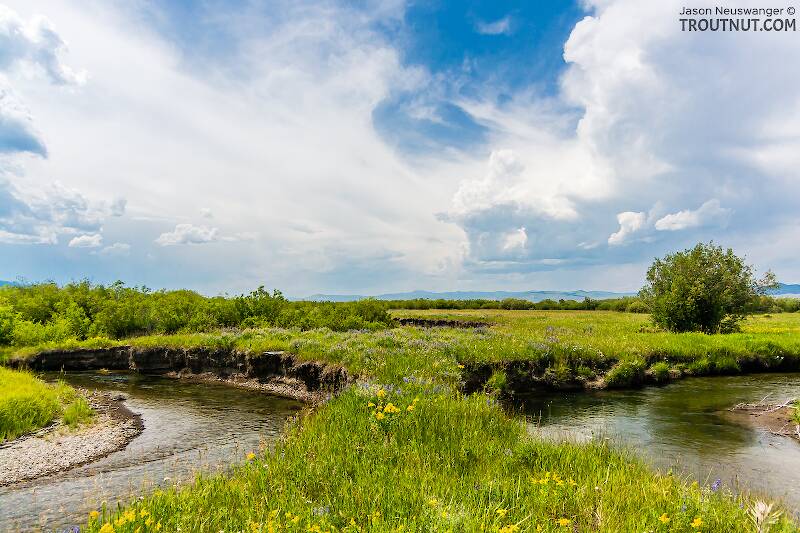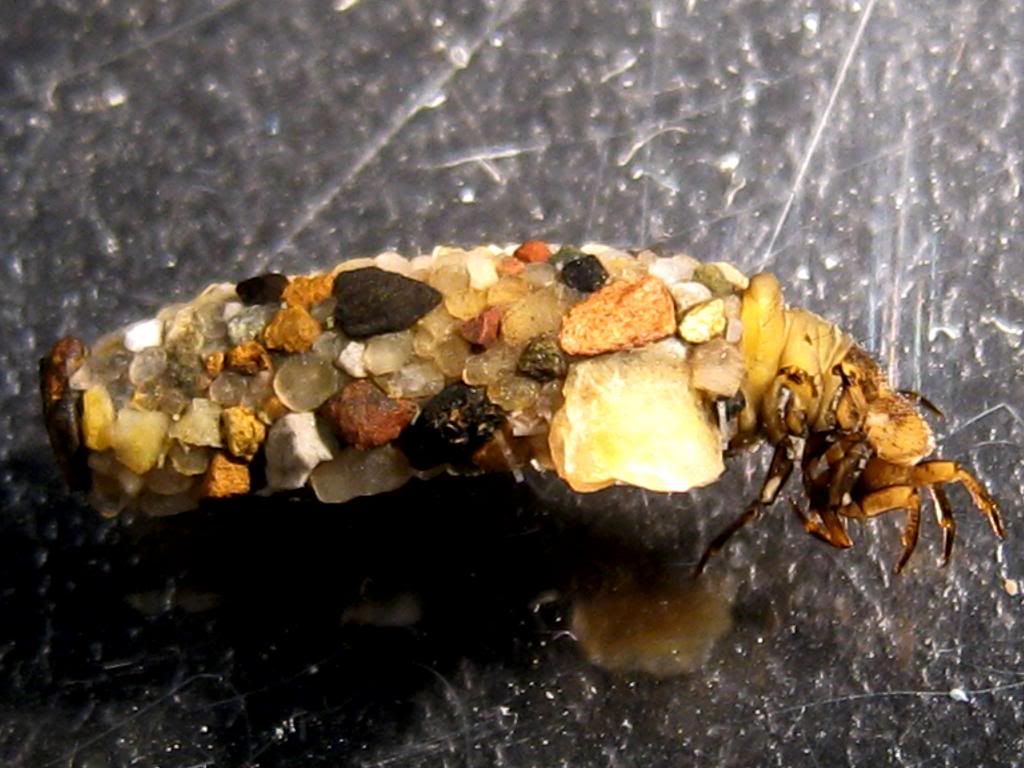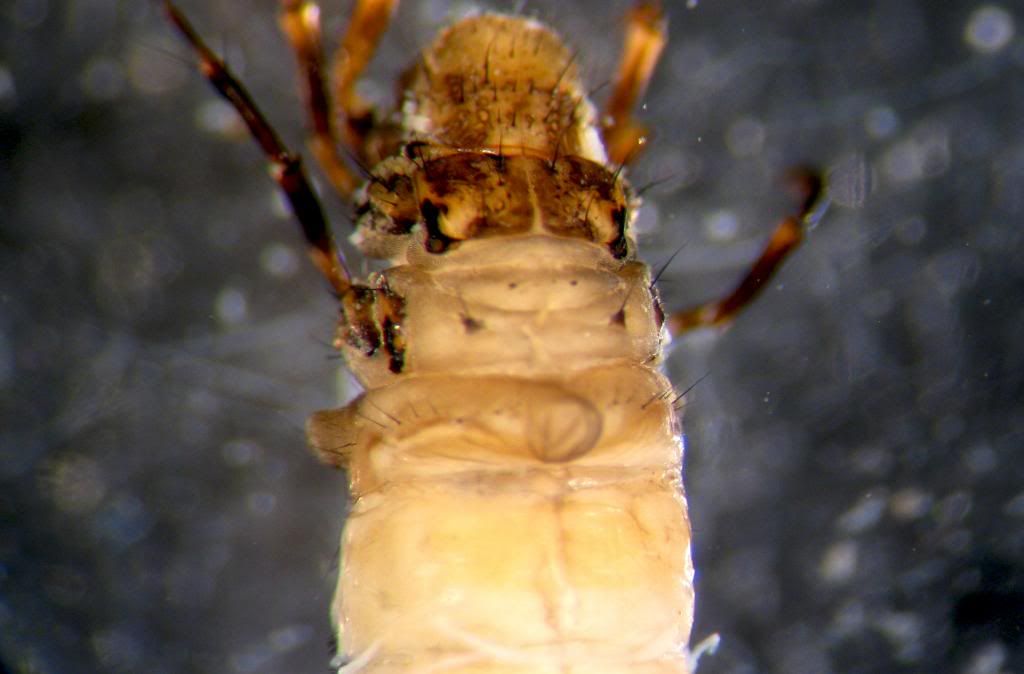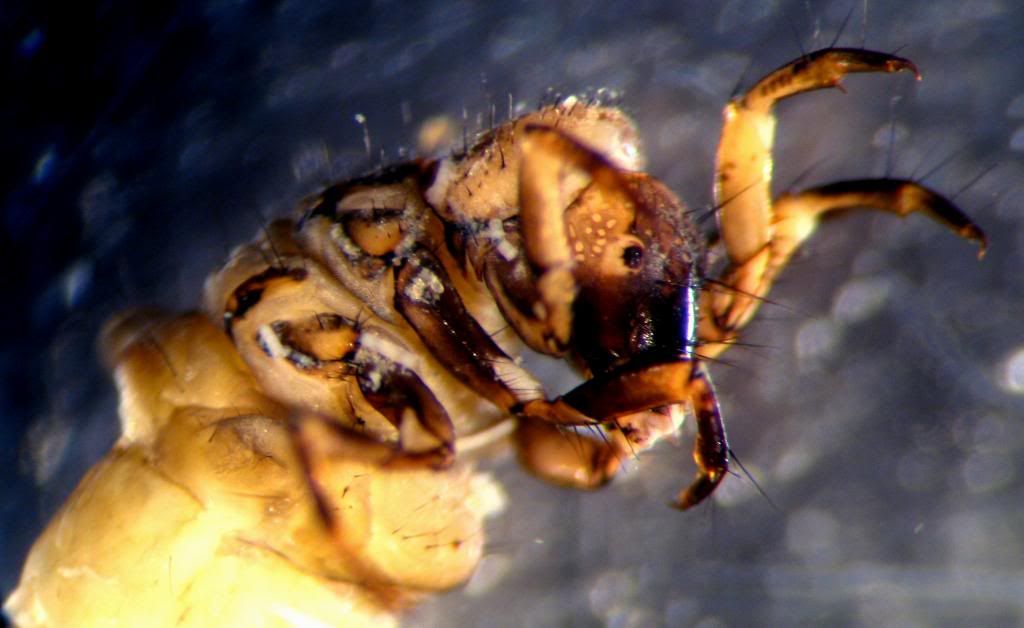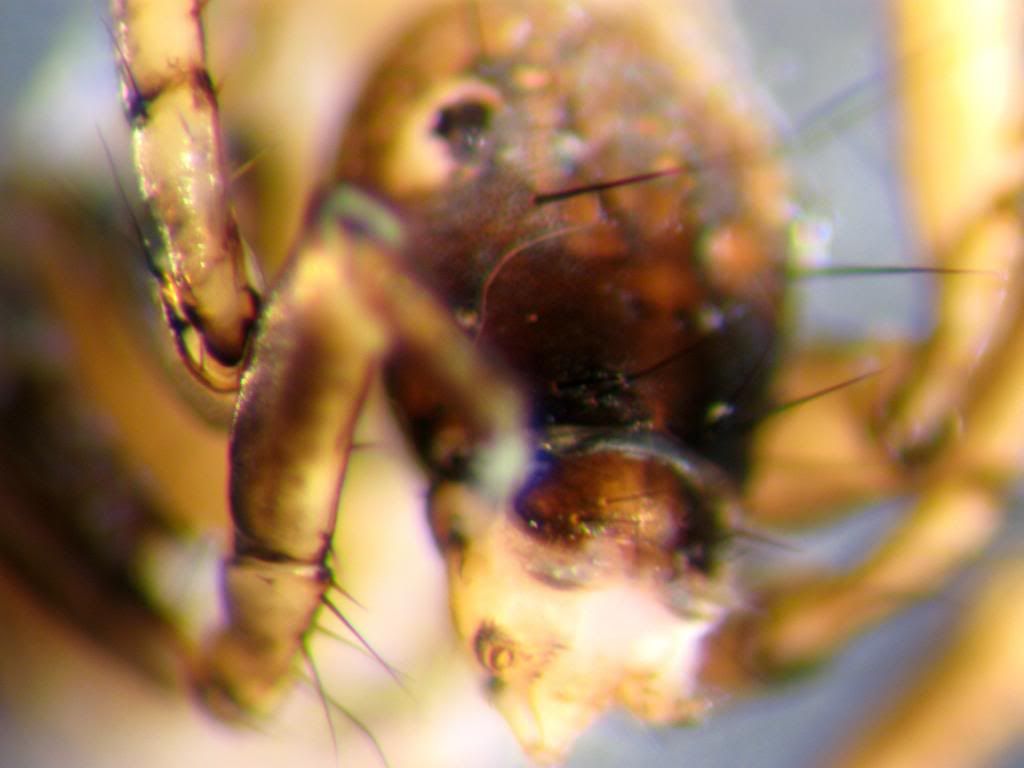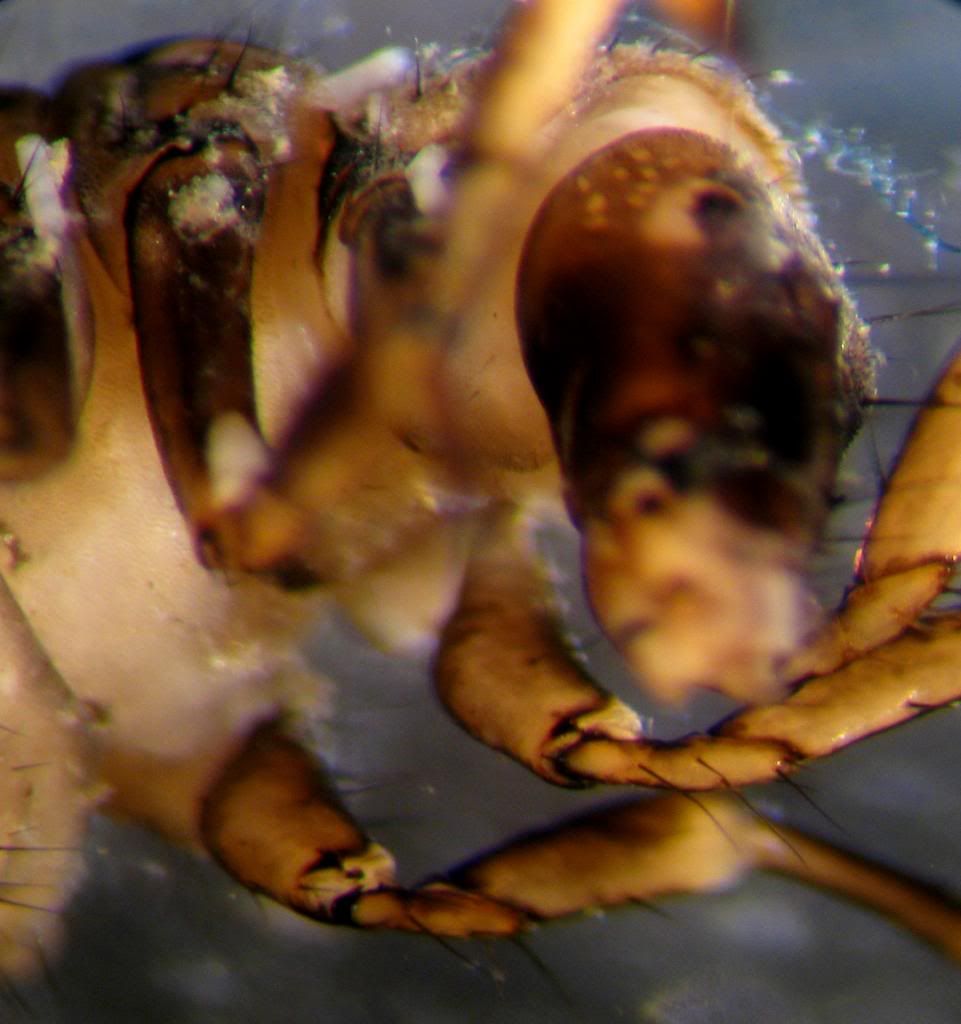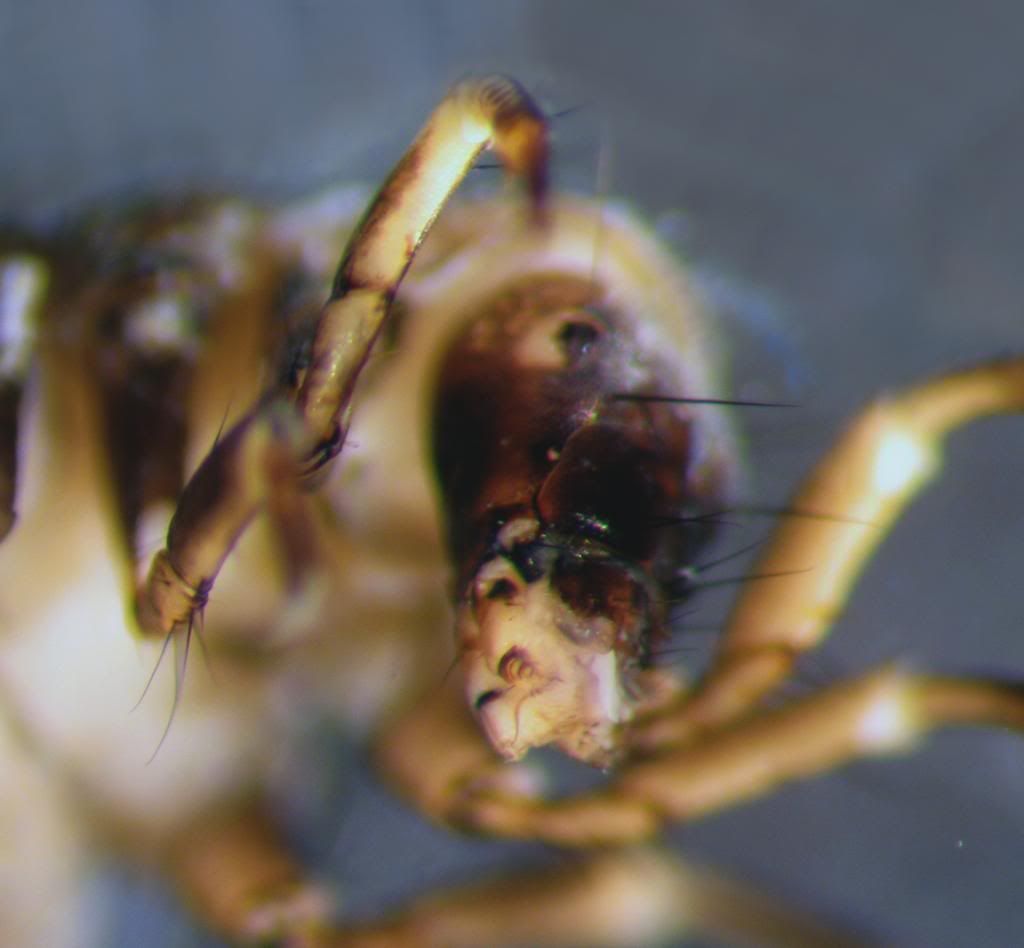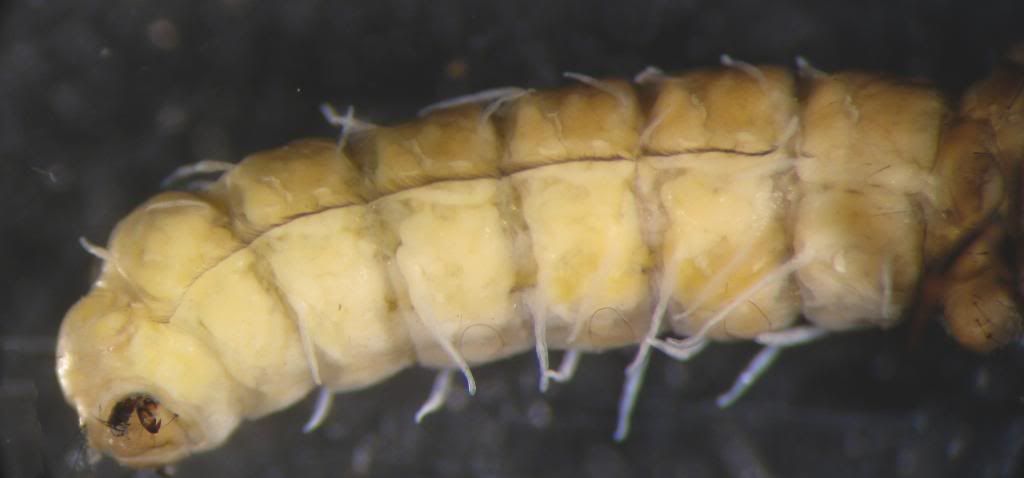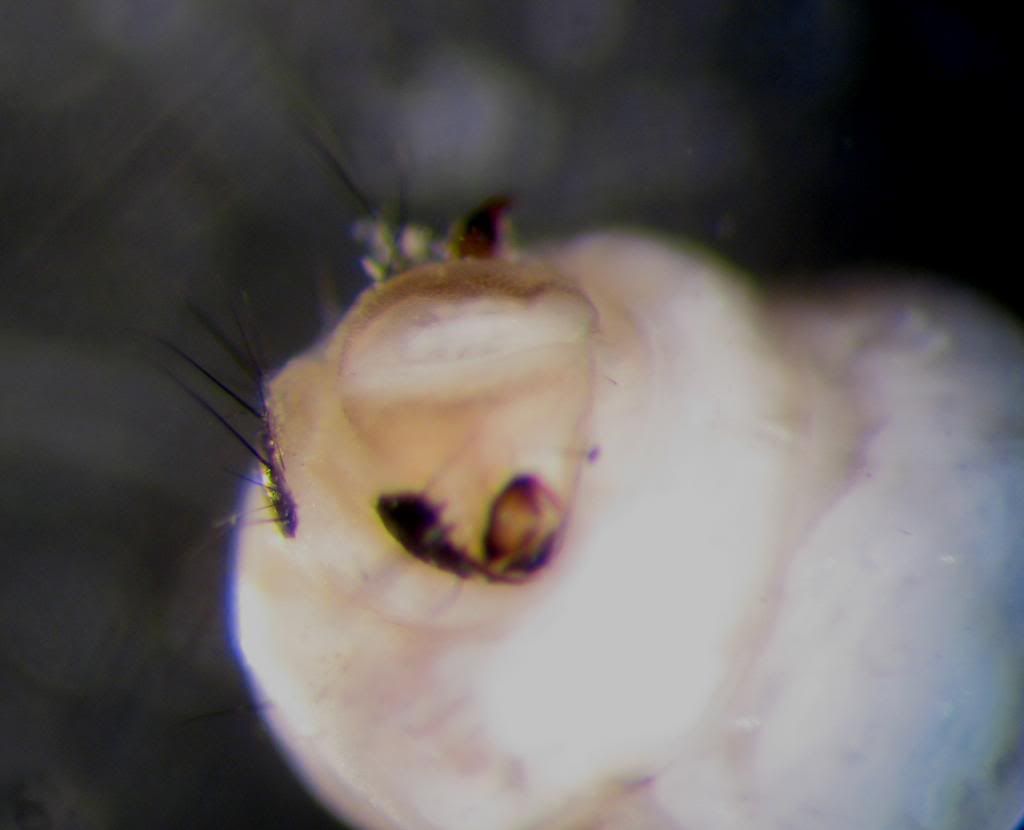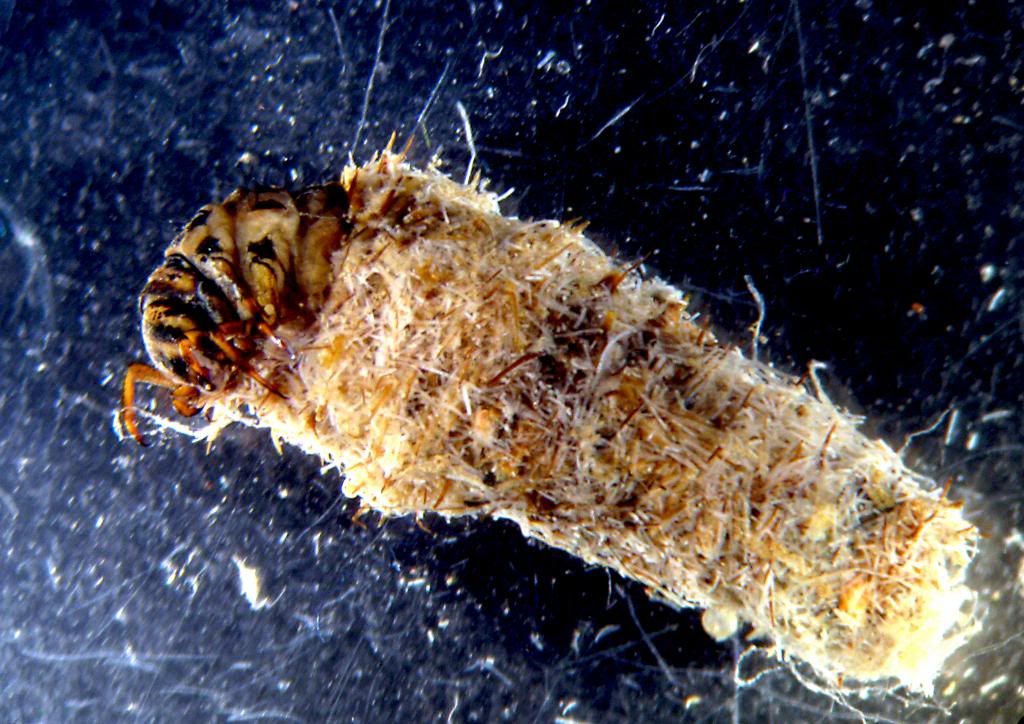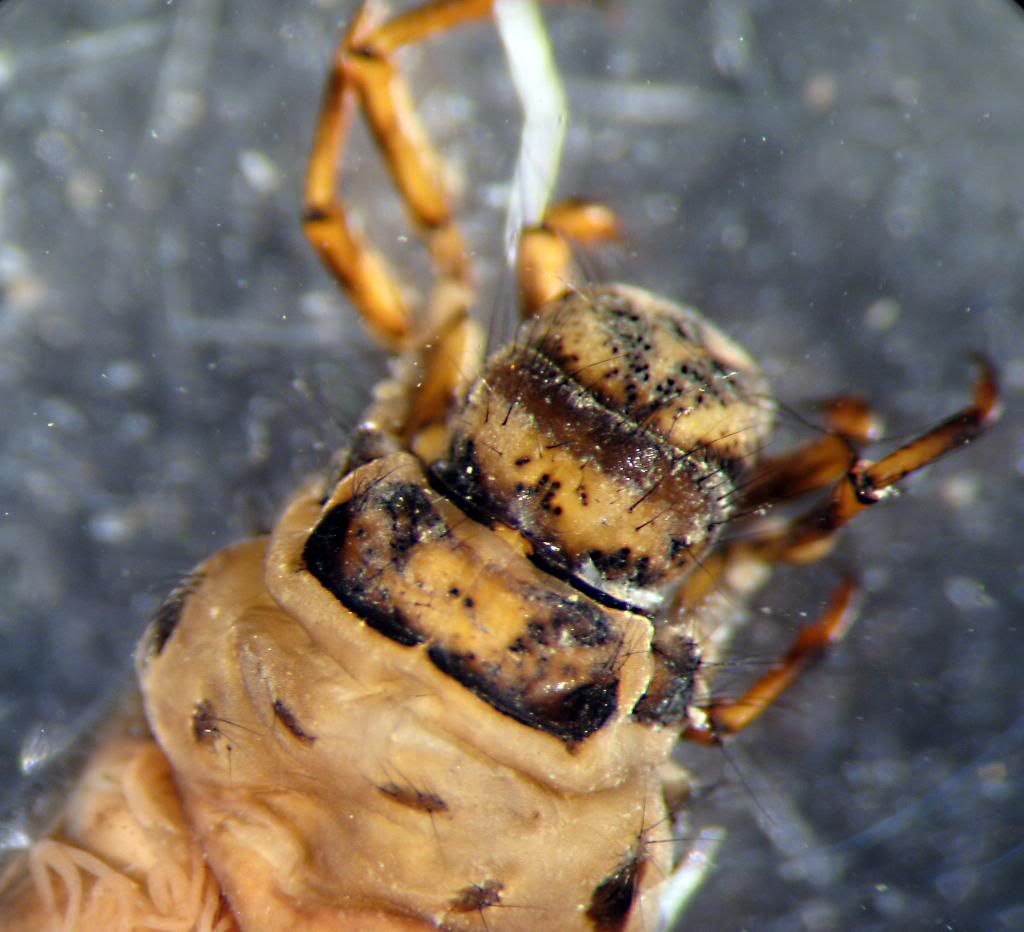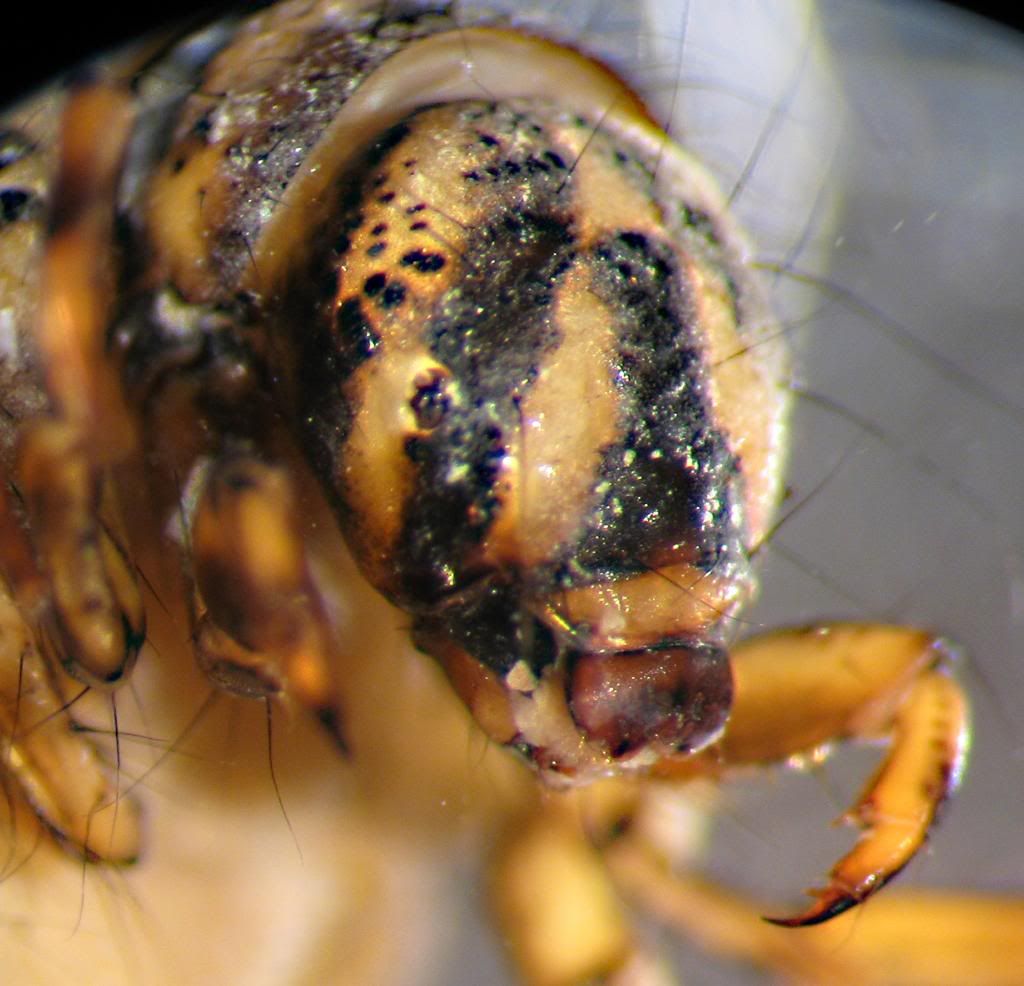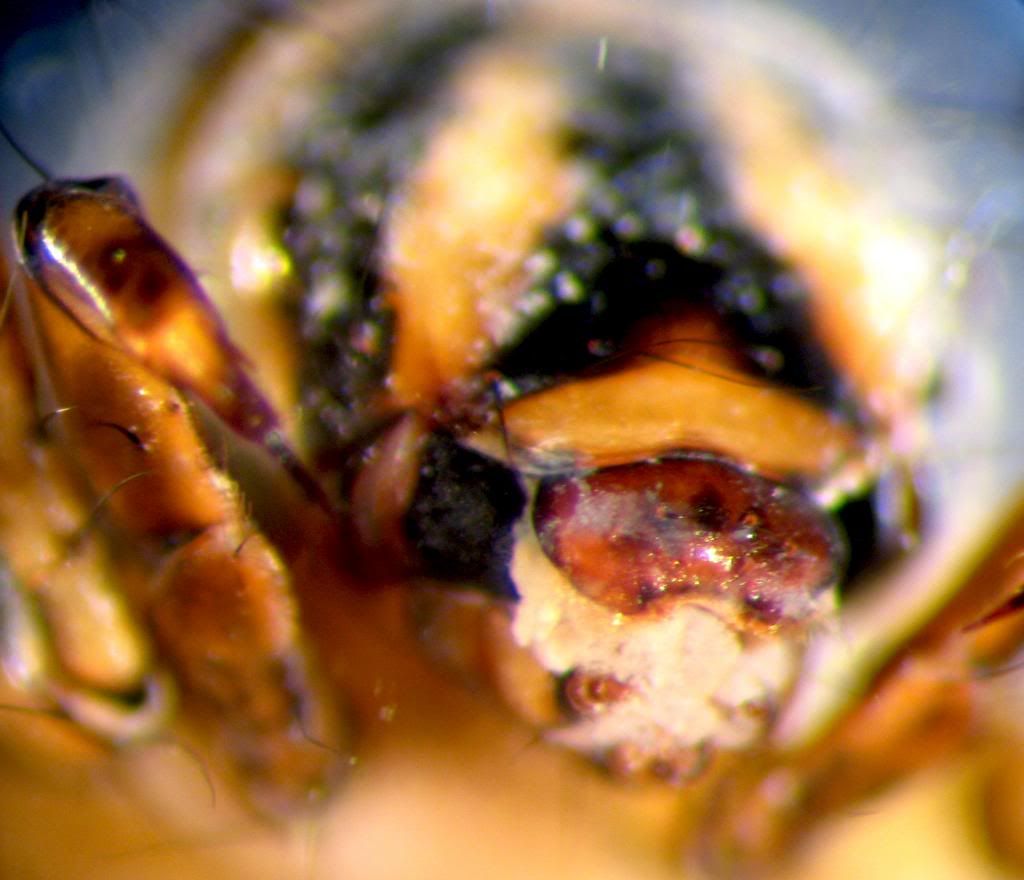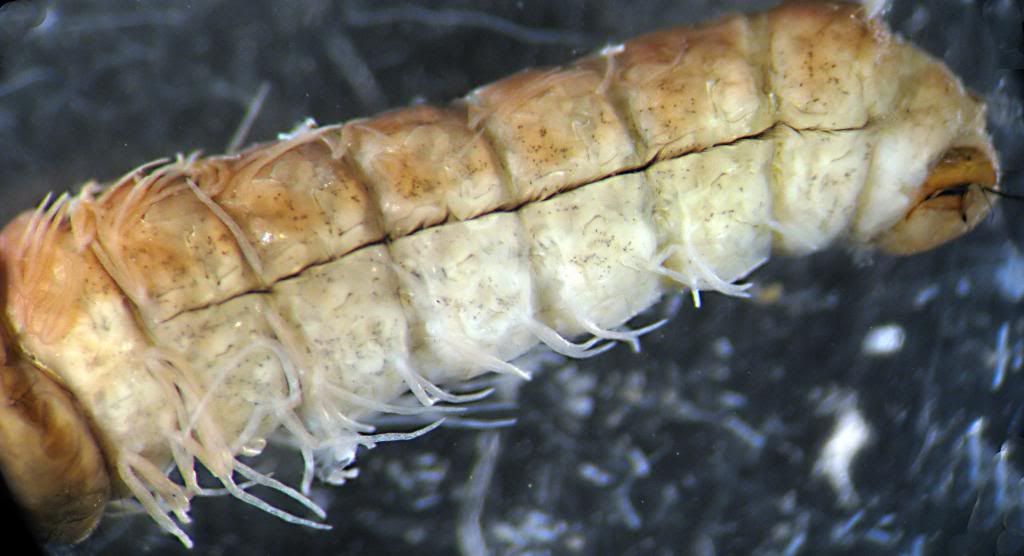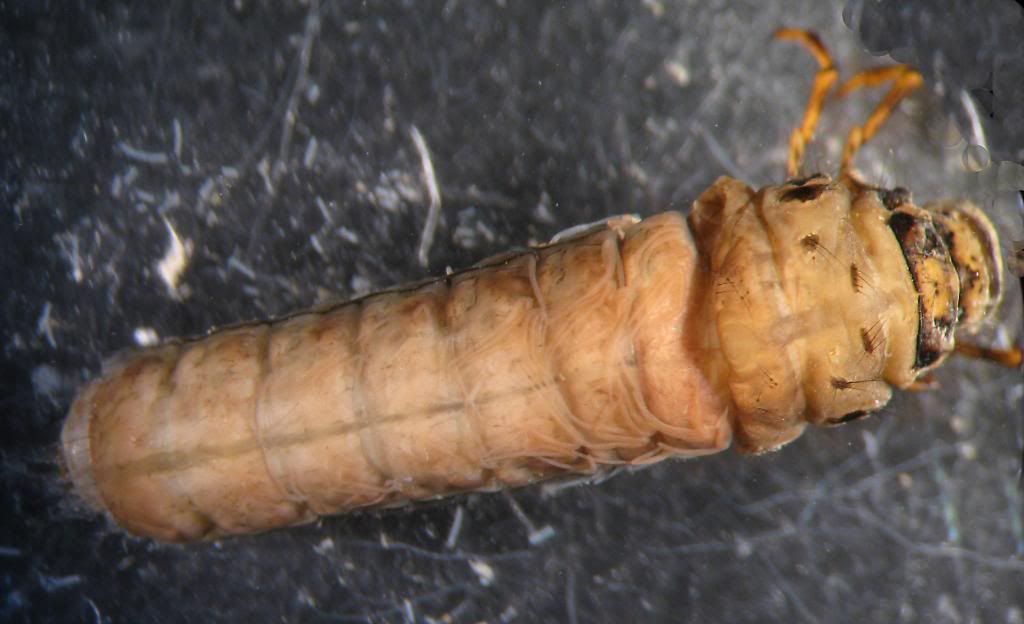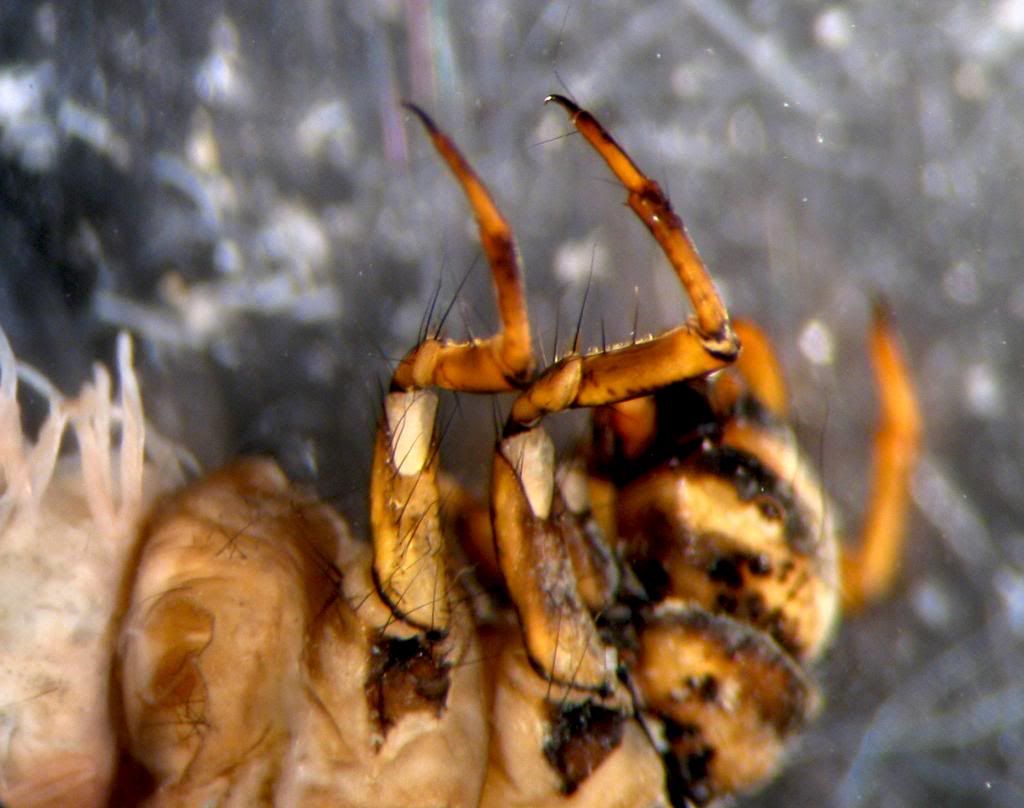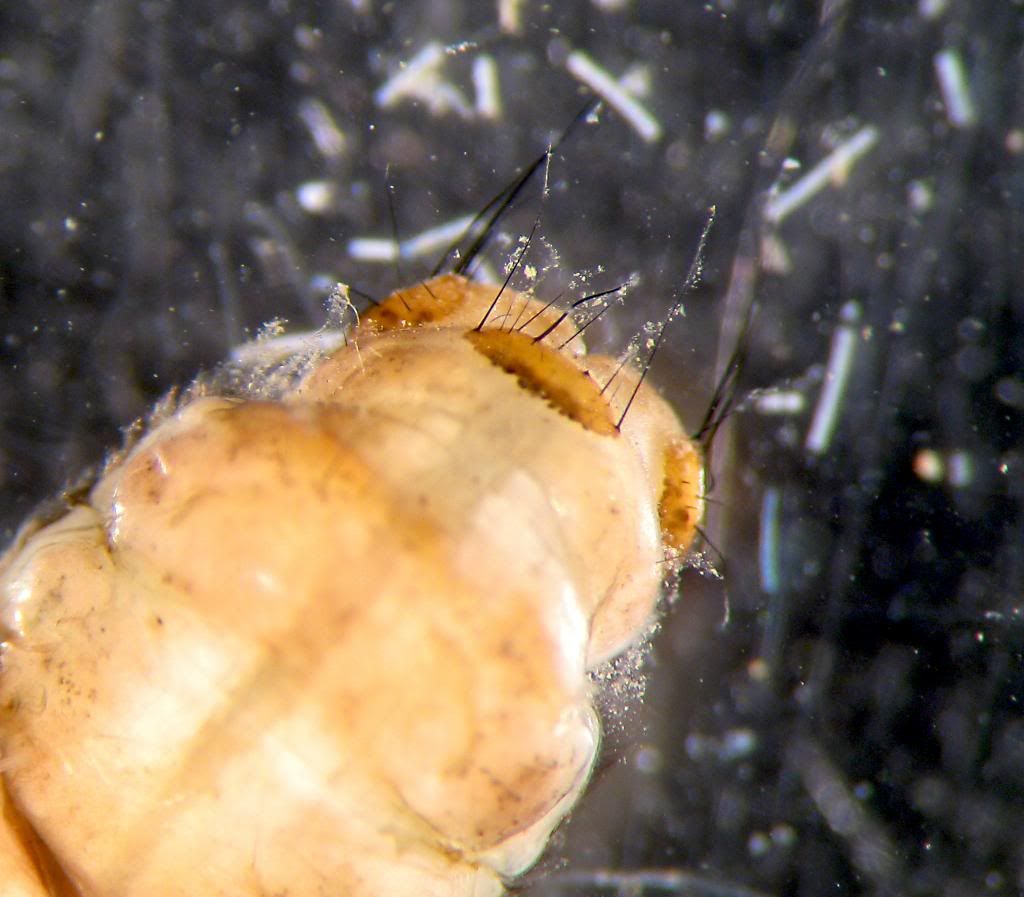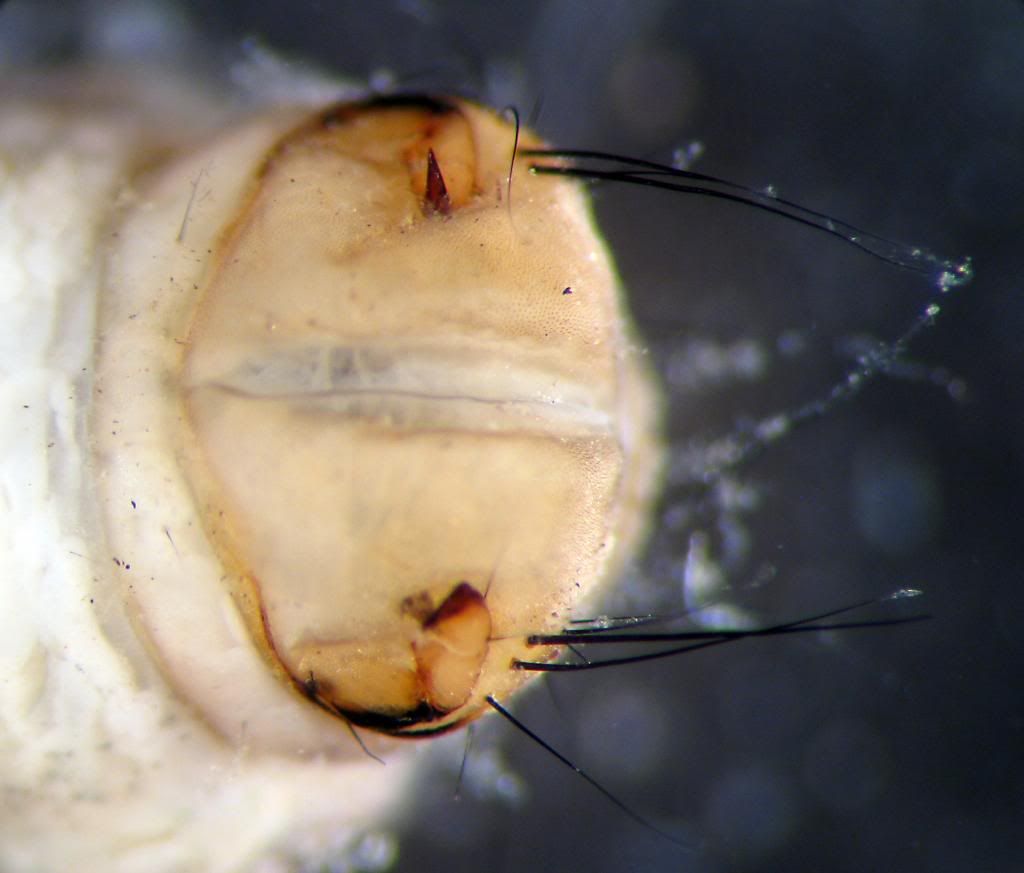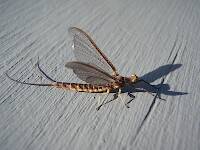
Salmonflies
Pteronarcys californica
The giant Salmonflies of the Western mountains are legendary for their proclivity to elicit consistent dry-fly action and ferocious strikes.
Featured on the forum

This wild-looking little thing completely puzzled me. At first I was thinking beetle or month larva, until I got a look at the pictures on the computer screen. I made a couple of incorrect guesses before entomologist Greg Courtney pointed me in the right direction with Psychodidae. He suggested a possible genus of Thornburghiella, but could not rule out some other members of the tribe Pericomini.

Troutnut is a project started in 2003 by salmonid ecologist Jason "Troutnut" Neuswanger to help anglers and
fly tyers unabashedly embrace the entomological side of the sport. Learn more about Troutnut or
support the project for an enhanced experience here.
Oldredbarn on Jan 17, 2013January 17th, 2013, 6:17 am EST
Nice! Eric, you need to tell us something about how you are taking these pics. What equipment etc.
Spence
Spence
"Even when my best efforts fail it's a satisfying challenge, and that, after all, is the essence of fly fishing." -Chauncy Lively
"Envy not the man who lives beside the river, but the man the river flows through." Joseph T Heywood
"Envy not the man who lives beside the river, but the man the river flows through." Joseph T Heywood
Crepuscular on Jan 17, 2013January 17th, 2013, 6:47 am EST
Thanks. My set up is basic. Stereo microscope and digital camera. post processing with photoshop.
Wbranch on Jan 17, 2013January 17th, 2013, 9:42 am EST
Well I can now say I've seen far more of a caddis larvae's butt than I've ever wanted to see.
Catskill fly fisher for fifty-five years.
Crepuscular on Jan 17, 2013January 17th, 2013, 10:39 am EST
Well I can now say I've seen far more of a caddis larvae's butt than I've ever wanted to see.
I'll post more tomorrow just for you.
Wbranch on Jan 17, 2013January 17th, 2013, 10:53 am EST
Thanks! Can't wait.
Catskill fly fisher for fifty-five years.
Crepuscular on Jan 17, 2013January 17th, 2013, 11:26 am EST
Neophylax?
That's what I'd call it. I try to get photos of the characters as one were going through the key. I wish I had the species key for Neophylax. But the last time I looked it was $180.00.
Entoman on Jan 17, 2013January 17th, 2013, 5:04 pm EST
I agree with you guys that this is a Dot-winged Sedge larva, but I have a question about the short basal spurs on the tarsal claws. Before it was moved to Uenoidae in the late 80's, older keys seem to group the neophylax genus with the long spurred group of genera in Limephilidae. Other than my own confusion, can there be any other explanation for the discrepancy?
As for species, I wouldn't know where to start, Eric. $180? It'll be awhile before I have a key for this genus!:) I think there are at least 10 documented for PA so far with 17 known for the NE. Are they all even associated yet, Dave?
As for species, I wouldn't know where to start, Eric. $180? It'll be awhile before I have a key for this genus!:) I think there are at least 10 documented for PA so far with 17 known for the NE. Are they all even associated yet, Dave?
"It's not that I find fishing so important, it's just that I find all other endeavors of Man equally unimportant... And not nearly as much fun!" Robert Traver, Anatomy of a Fisherman
Creno on Jan 17, 2013January 17th, 2013, 6:02 pm EST
In NA I think the larvae of Ne. kolodskii from Tennessee and Ne. virginica are still undescribed. Not sure where you got $180 but I will sell you mine for $150. For that I will try and get it signed for ya.
try http://enssc.com/525Home.aspx?store=525 for a copy.
short vs long basal spurs? just another example of taxonomic characters changing with additional knowledge. The primary reason the Uenoids were in the Limnephilidae is because they were thought to be closer to the limnephilids than anything else. The Limnephilidae was, and still is, a group which needs alot of further work. If your french is any good see Schmid F. 1955 (Contribution a l'etude des Limnophilidae (Trichoptera). Mitteilungen der Schweizerischen Entomologischen Gesellschaft 28 beiheft: 1-245.) for a great view of the issue at that time and then try Vshivkova, T, Morse, JC., & Ruiter, D. 2007. (Phylogeny of Limnephilidae and composition of the genus Limnephilus (Limnephilidae, Limnephilinae, Limnephilini). Pages 309-319 in Bueno-Soria, Joaquín, Barba-Álvarez, Rafael, Armitage, Brian J. (eds.) Proceedings of the 12th International Symposium on Trichoptera. Columbus, Ohio, The Caddis Press.) for a more recent opinion.
try http://enssc.com/525Home.aspx?store=525 for a copy.
short vs long basal spurs? just another example of taxonomic characters changing with additional knowledge. The primary reason the Uenoids were in the Limnephilidae is because they were thought to be closer to the limnephilids than anything else. The Limnephilidae was, and still is, a group which needs alot of further work. If your french is any good see Schmid F. 1955 (Contribution a l'etude des Limnophilidae (Trichoptera). Mitteilungen der Schweizerischen Entomologischen Gesellschaft 28 beiheft: 1-245.) for a great view of the issue at that time and then try Vshivkova, T, Morse, JC., & Ruiter, D. 2007. (Phylogeny of Limnephilidae and composition of the genus Limnephilus (Limnephilidae, Limnephilinae, Limnephilini). Pages 309-319 in Bueno-Soria, Joaquín, Barba-Álvarez, Rafael, Armitage, Brian J. (eds.) Proceedings of the 12th International Symposium on Trichoptera. Columbus, Ohio, The Caddis Press.) for a more recent opinion.
Crepuscular on Jan 18, 2013January 18th, 2013, 3:08 am EST
Jeez Dave I just found Vineyard et al for $12.95. But they want $47.00 to ship it to me. I may be able to drive to Toronto for that... I guess the last time I looked I just did a web search for it and it came back with that $180.00 copy. Thanks for the link! You know the last time I spent a large amount of money for an out of print volume (I was excited because I found it for under $200.00) About 6 months later the darn thing went into the public domain and you can now get it for free...Oh and that was very generous of you to get me signed copy for $150 ;)
About the Limnephilids, I'll say they need work.
About the Limnephilids, I'll say they need work.
Crepuscular on Jan 18, 2013January 18th, 2013, 6:36 am EST
Martinlf on Jan 18, 2013January 18th, 2013, 9:10 am EST
Those last photos remind me of the whole size matters controversy.
But seriously, how long were the bugs case and all? Also, I could say that I can't tell if they are the same insect because the shots of the derrieres are from different angles, but that would be a lie. So, can anyone tell if they are? Or do the same species always use the same material for cases? And finally, what would the adults look like and when might we see them?
But seriously, how long were the bugs case and all? Also, I could say that I can't tell if they are the same insect because the shots of the derrieres are from different angles, but that would be a lie. So, can anyone tell if they are? Or do the same species always use the same material for cases? And finally, what would the adults look like and when might we see them?
"He spread them a yard and a half. 'And every one that got away is this big.'"
--Fred Chappell
--Fred Chappell
Creno on Jan 18, 2013January 18th, 2013, 9:24 am EST
Pretty good pics - its one for the checklist folks. I cannot see the number of setae at the mesonotal sa1 but pretty sure it is something near Limnephilus externus/extractus. Other characters that would remove some uncertainty would be the presence/absence of dorsal chloride epithelia (I suspect they are absent) and presence/absence of accessory setae on the lateral femur surfaces. I cannot see the accessory setae in the photo but they can be small and clear. The best way to see them is to look at femur from a dorsal or ventral view. Then you can see them sticking out from the lateral surface if they are present and not broken off.
looks like you are ready to step up to the next level of micro pictures. Check out: http://zerenesystems.com/cms/stacker/docs/videotutorials/retouching001/index
It is easy to do - just takes patience.
looks like you are ready to step up to the next level of micro pictures. Check out: http://zerenesystems.com/cms/stacker/docs/videotutorials/retouching001/index
It is easy to do - just takes patience.
Crepuscular on Jan 18, 2013January 18th, 2013, 9:36 am EST
But seriously, how long were the bugs case and all?
The first series of photos are of a Neophylax caddisfly (family Uenoidae) and is 11mm with case. The second, is a Limnephilidae caddisfly, Limnephilus if I had to guess a species I'd say rhombicus but i'm not 100% sure on that. and is 16 mm.
Also, I could say that I can't tell if they are the same insect because the shots of the derrieres are from different angles, but that would be a lie. So, can anyone tell if they are? Or do the same species always use the same material for cases? And finally, what would the adults look like and when might we see them?
Most, but not all, use the same materials for their cases.
If the second one is rhombicus here is a photo of the adult: http://bugguide.net/node/view/571240/bgimage
And I would expect to see them in late summer early fall
The first one Neophylax , Kurt called it a dot-Winged sedge, I'm not up on caddisfly common names, and I would expect to see it in the summer and fall as well. Also I'm not willing to make guess on the species for that one.
Creno on Jan 18, 2013January 18th, 2013, 9:43 am EST
The same species do not always make the same case type. I think this has been discussed in other threads. At a given locality on a given day the majority of the cases for a single species will probably look similar, but, especially in Limnephilus, there seem to always be exceptions.
There are lots of images of Limnephilus externus on the web and a good one here on Troutnut by Bob Newell. Whatever this species is, the adult should look close to L. externus with the typical diagonal pale slash crossing the dark band on the wing.
There are lots of images of Limnephilus externus on the web and a good one here on Troutnut by Bob Newell. Whatever this species is, the adult should look close to L. externus with the typical diagonal pale slash crossing the dark band on the wing.
Crepuscular on Jan 18, 2013January 18th, 2013, 9:45 am EST
So you don't think it's rhombicus? Feel free to tell me I'm wrong! Like I said, I'm guessing at the species.
Oldredbarn on Jan 18, 2013January 18th, 2013, 10:08 am EST
Eric,
Seems to me these should be straightened out, as well as they can be, meaning species etc, maybe Dave could help, and then the photos attached somehow to the bug listings on this site...These are really good photos...
Spence
Seems to me these should be straightened out, as well as they can be, meaning species etc, maybe Dave could help, and then the photos attached somehow to the bug listings on this site...These are really good photos...
Spence
"Even when my best efforts fail it's a satisfying challenge, and that, after all, is the essence of fly fishing." -Chauncy Lively
"Envy not the man who lives beside the river, but the man the river flows through." Joseph T Heywood
"Envy not the man who lives beside the river, but the man the river flows through." Joseph T Heywood
Creno on Jan 18, 2013January 18th, 2013, 10:23 am EST
I am not saying it is not L. rhombicus. I just cannot tell from the images you have. And I don't have good confirmed larvae of L. rhombicus to compare to the other two, and a few more possible Limnephilus. Another character that may be useful is the size/shape of the sternites between the prolegs.
Here is a plug - In North America there are currently between 90 and 100 species of Limnephilus. Around a dozen of the larvae for those species have been described. And the majority of those descriptions do not mention why the one species is different from another closely related species - a very important diagnostic tool. While progress is being made it will be years yet before even 50% can be confidently separated from each other. Students are not being funded for this research and there are almost no jobs doing this kind of basic science. The task is going to fall to the amateur naturalists with the time and inclination. It can be done with the association of interested amateurs - look at the efforts made by fishermen with the mayflies. Caddis are just the next step. Properly save and document your collections. Try and get them to folks who are interested and willing to help. If you are going to throw them out throw them at an entomological museum where they can be preserved and examined by future generations.
Here is a plug - In North America there are currently between 90 and 100 species of Limnephilus. Around a dozen of the larvae for those species have been described. And the majority of those descriptions do not mention why the one species is different from another closely related species - a very important diagnostic tool. While progress is being made it will be years yet before even 50% can be confidently separated from each other. Students are not being funded for this research and there are almost no jobs doing this kind of basic science. The task is going to fall to the amateur naturalists with the time and inclination. It can be done with the association of interested amateurs - look at the efforts made by fishermen with the mayflies. Caddis are just the next step. Properly save and document your collections. Try and get them to folks who are interested and willing to help. If you are going to throw them out throw them at an entomological museum where they can be preserved and examined by future generations.
Entoman on Jan 18, 2013January 18th, 2013, 10:31 am EST
short vs long basal spurs? just another example of taxonomic characters changing with additional knowledge.
Thanks Dave. Yeah, that's what I figured, but was wondering if there might have been additional reasons.
The primary reason the Uenoids were in the Limnephilidae...
What trips me up is not all of them were, only the stocky ones. I'm still stuck in the mindset that uenoids are supposed to be long and skinny when first thinking of them. I need to expunge that prejudice.:)
If your french is any good see Schmid...
Unfortunately, it hasn't improved since the last time you recommended a French paper.:) It's interesting (not to mention frustrating) that most caddis papers in the public domain (which represents a small percentage of those extant to begin with) are in foreign languages, or if in English they have to be bought. And not affordably, I might add. The same can be said for stonefly papers, too. Too bad there aren't organizations that assemble these papers and put them in the public domain. I guess the mayfly community is either more organized and/or large enough to support such endeavors.):
Eric - I agree the last pictures are of a limnephilid, probably Limnephilus. If I'm right about the genus, there are a more manageable number of species known for PA. Perhaps Dave will see something that will point to a species as I would think this specimen is uniquely marked.
"It's not that I find fishing so important, it's just that I find all other endeavors of Man equally unimportant... And not nearly as much fun!" Robert Traver, Anatomy of a Fisherman
Quick Reply
Related Discussions
Topic
Replies
Last Reply
0
Sep 23, 2006
by Litobrancha
by Litobrancha
8
Jun 16, 2013
by PaulRoberts
by PaulRoberts
0
Sep 23, 2006
by Litobrancha
by Litobrancha

